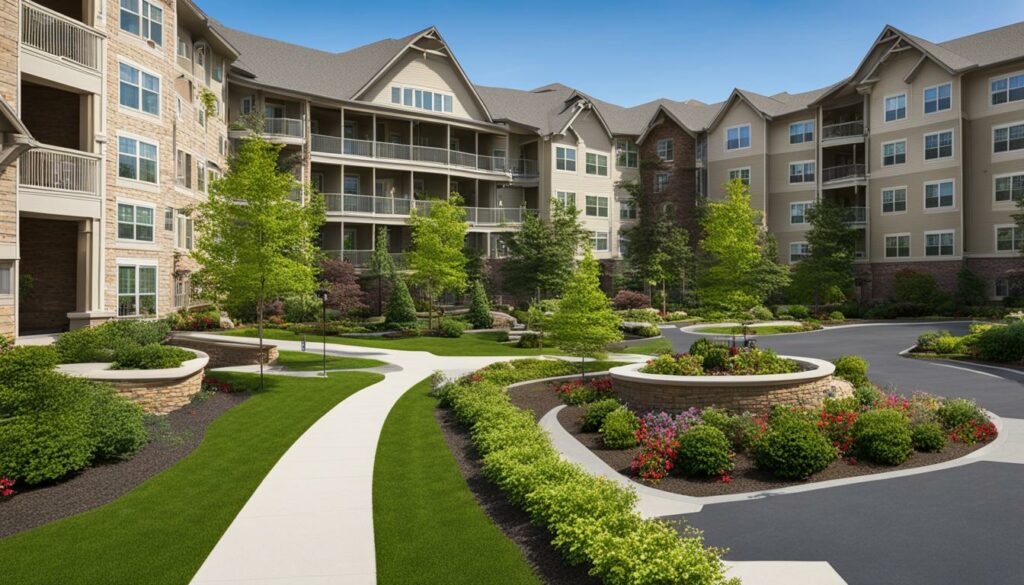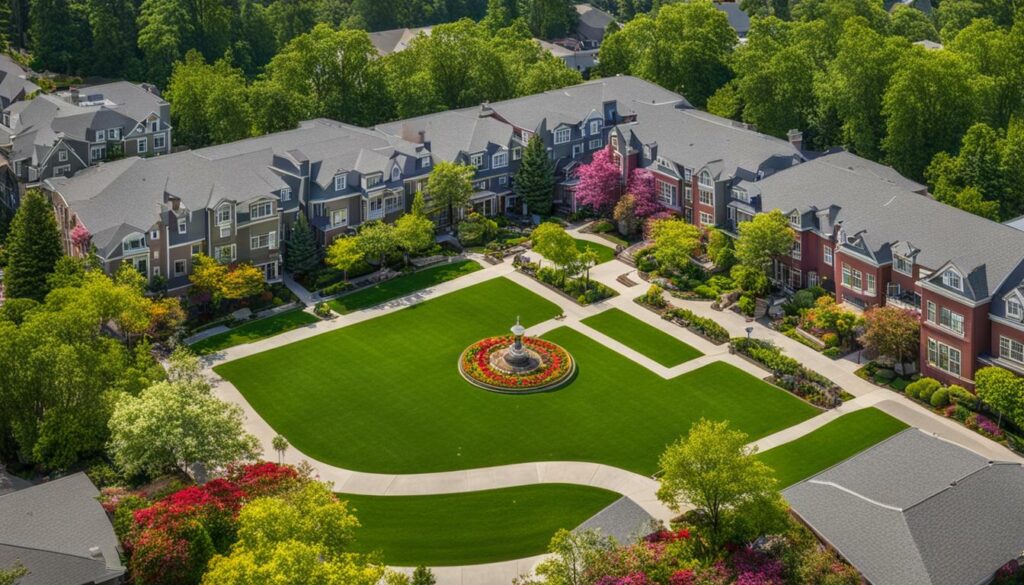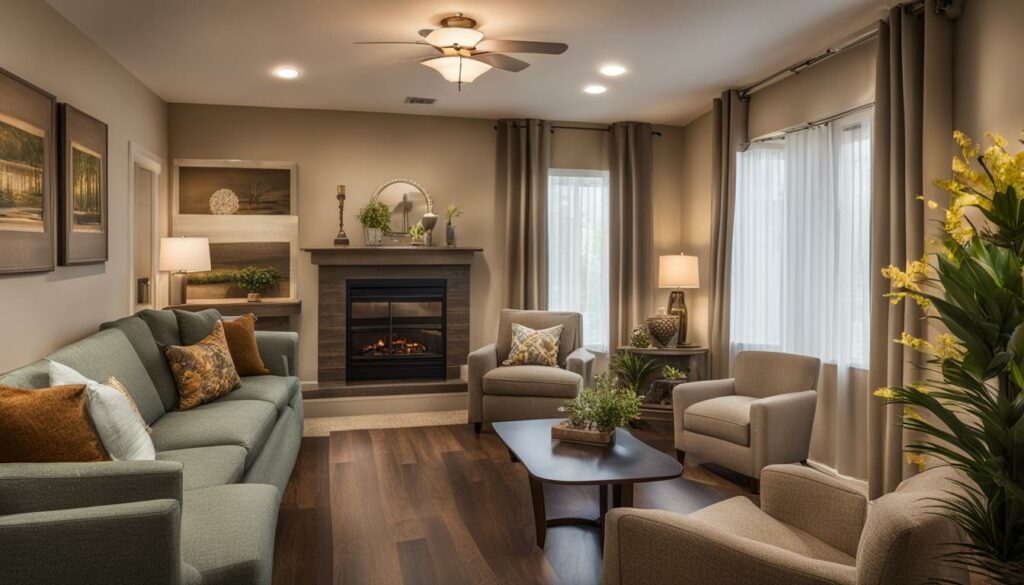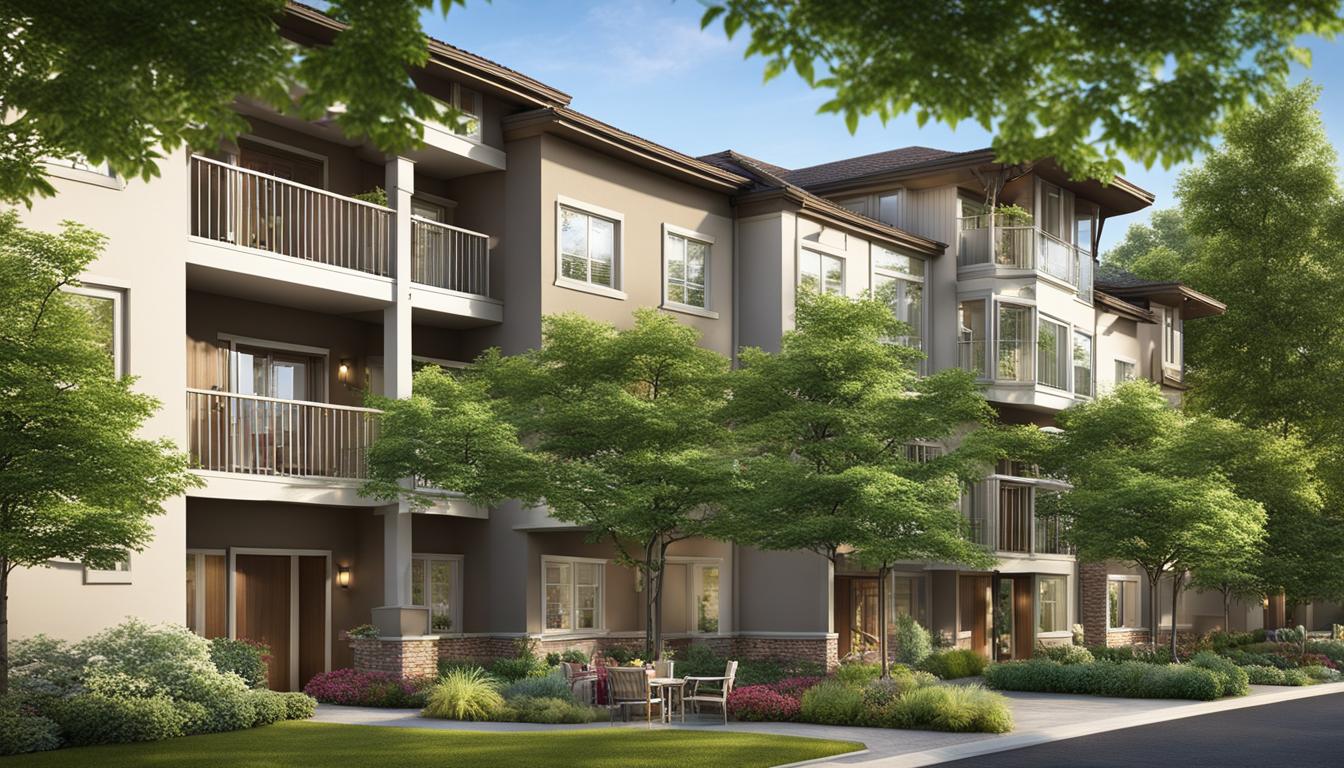Affordable Independent Living for Seniors: A Comprehensive Guide
As individuals age, finding affordable independent living options becomes a crucial consideration. Seniors deserve comfortable and secure living arrangements that fit within their budget. In this comprehensive guide, we will explore various senior living options that provide affordability, ensuring older adults can make informed decisions about their housing needs.
Thank you for reading this post, don't forget to subscribe!
Key Takeaways:
- Affordable independent living is essential for seniors.
- There are several senior living options that offer affordability.
- Retirement communities provide senior apartments and a supportive environment for independent living.
- Low-income and subsidized senior housing options are available through HUD and other organizations.
- Assisted living and residential care facilities offer assistance for seniors with varying needs.
- Consider financial situation, level of independence, and care needs when choosing an affordable senior living option.
Retirement Community Housing
Retirement communities are a popular choice for affordable independent living among seniors. These communities are designed for individuals aged 55 and above and offer a range of senior apartments. Senior apartments are the most common type of senior-specific housing, providing a comfortable and secure environment for older adults.
Within retirement communities, senior apartments offer various amenities and services that cater to the specific needs of seniors. These include dining halls, social calendars, and transportation services. The goal is to create a supportive environment that allows seniors to maintain their independence while enjoying social activities and convenient amenities.
One of the advantages of senior apartments in retirement communities is the flexibility in payment options. Many senior apartments accept private payment solutions, allowing seniors to utilize their retirement savings or other sources of income. Additionally, government housing vouchers are available for low-income seniors, providing a cost-effective solution for those in need of affordable housing.

Overall, retirement community housing offers a viable option for affordable independent living for seniors. The combination of senior apartments, amenities, and payment flexibility make it an attractive choice for those looking for budget-friendly senior living options.
Low-Income and Subsidized Senior Housing
For seniors facing financial insecurity, there are affordable housing options available, including subsidized senior living facilities. The United States Department of Housing and Urban Development (HUD) offers public housing apartments and single-family homes for older adults in need. These housing options come with accessibility features, transportation services, cleaning services, and resident activities. Subsidized rents are typically based on 30% of the individual’s income, making it an affordable option for low-income seniors. However, availability can be limited, and there are often long waitlists for these subsidized housing options.
Subsidized senior living facilities provide a way for older adults to access safe and comfortable housing at a reduced cost. These facilities are designed to meet the needs of low-income seniors, offering affordable housing options that are specifically tailored to their unique circumstances. By offering subsidized rents, these facilities aim to alleviate the financial burden that many seniors face, allowing them to maintain their independence and enjoy a high quality of life.
“Subsidized senior living facilities provide a lifeline for low-income seniors, offering an affordable and supportive environment where they can thrive.”
However, it is important to note that the demand for subsidized senior housing often exceeds the supply, resulting in long waitlists. Seniors in need of affordable housing are encouraged to apply as early as possible and explore alternative options in the meantime. Additionally, eligibility requirements and application processes may vary depending on the specific housing program and location, so it is crucial to research and gather all necessary documentation in advance.
Benefits of Low-Income and Subsidized Senior Housing
There are several benefits to living in low-income and subsidized senior housing. These include:
- Reduced financial burden: Subsidized rents based on income make housing more affordable for low-income seniors.
- Access to amenities and services: Subsidized senior living facilities often provide a range of amenities and services, such as transportation, cleaning services, and organized resident activities.
- Supportive community: These housing options offer a supportive community environment, allowing seniors to connect with others and participate in social activities.
- Accessibility features: Many subsidized housing facilities are designed with accessibility in mind, ensuring that seniors with mobility challenges can navigate their living spaces comfortably.
Overall, low-income and subsidized senior housing provide a lifeline for low-income seniors, offering an affordable and supportive environment where they can thrive. By taking advantage of these housing options, older adults can find a place to call home that meets their needs and allows them to maintain their independence.
| Benefits of Low-Income and Subsidized Senior Housing |
|---|
| Reduced financial burden |
| Access to amenities and services |
| Supportive community |
| Accessibility features |

Assisted Living and Residential Care Options
When it comes to affordable senior living options, assisted living facilities and residential care facilities provide valuable solutions for seniors who require assistance with daily activities and home maintenance. Assisted living facilities offer a range of services, including meals, activities, and help with activities of daily living (ADLs). These facilities provide a supportive environment where seniors can maintain their independence while receiving the necessary care and support.
Residential care facilities, on the other hand, offer round-the-clock care, meals, and assistance with ADLs. These facilities are well-suited for seniors with greater care needs and require a higher level of assistance. While residential care facilities may be more expensive compared to other independent living options, they provide the peace of mind and comprehensive care that some seniors require.
It is important for seniors and their families to carefully consider the cost and level of assistance required when exploring assisted living and residential care options. Each facility may have different pricing structures and care plans, so it is essential to research and compare to find the most suitable option. Additionally, make sure to inquire about any additional fees or services that may be included in the overall cost.
Benefits of Assisted Living and Residential Care
Assisted living facilities and residential care facilities offer numerous benefits for seniors. These include:
- Access to trained staff who can provide assistance with daily activities and medication management.
- A safe and secure environment with 24-hour supervision and emergency response systems.
- Socialization opportunities through organized activities, outings, and events.
- Nutritious meals prepared by professional chefs and tailored to individual dietary needs.
- Housekeeping and maintenance services to ensure a clean and well-maintained living space.
By choosing the right assisted living or residential care facility, seniors can enjoy a comfortable and supportive living environment that meets their care needs while being mindful of their budget. It is advisable to schedule visits to potential facilities, meet the staff, and speak with current residents to get a better understanding of the services and atmosphere provided.

Table: Comparing Assisted Living and Residential Care Facilities
| Facility | Services Offered | Cost |
|---|---|---|
| Assisted Living | Meals, activities, assistance with ADLs, medication management, transportation | Varies by location and level of care needed |
| Residential Care | 24-hour care, meals, assistance with ADLs, medication management, transportation | Varies by location and level of care needed |
Conclusion
Affordable independent living is a significant consideration for seniors, and luckily, there are numerous cost-effective retirement living options available. From retirement community housing to low-income and subsidized senior housing, there are economical senior living communities that cater to various budgets. Assisted living facilities and residential care options are also available for those needing additional support.
When deciding on the right living arrangement, it’s crucial to assess your financial situation, level of independence, and care needs. Retirement community housing, such as senior apartments, provides a supportive environment with amenities and social activities. Low-income and subsidized senior housing, offered by the Department of Housing and Urban Development, ensures affordable options for older adults facing financial insecurity.
Assisted living facilities and residential care options are suitable for seniors who require assistance with daily activities. While the cost may vary, they offer a higher level of care for those with greater needs. By exploring these different affordable senior living communities, you can find an independent living option that meets your needs while staying within your budget.
Whether you’re looking for independent living on a budget or seeking economical senior living communities, there is a range of options available. Take the time to research and consider what works best for you, ensuring a comfortable and enjoyable retirement experience.
FAQ
What are the different types of affordable independent living options for seniors?
The different types of affordable independent living options for seniors include retirement community housing, low-income and subsidized senior housing, assisted living facilities, and residential care options.
What is retirement community housing?
Retirement community housing refers to communities designed for individuals aged 55 and above, offering a range of senior apartments with dining halls, social calendars, and transportation.
What is low-income and subsidized senior housing?
Low-income and subsidized senior housing refers to housing options provided by the United States Department of Housing and Urban Development (HUD) for older adults in need. These options come with accessibility features, transportation services, cleaning services, and resident activities, with rents based on 30% of income.
What are assisted living facilities?
Assisted living facilities offer meals, activities, and assistance with activities of daily living (ADLs) for seniors who require help with daily activities and home maintenance.
What are residential care facilities?
Residential care facilities provide 24-hour care, meals, and assistance with activities of daily living (ADLs) for seniors with greater needs.

